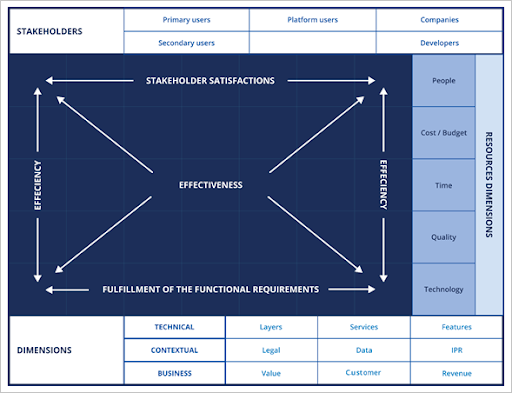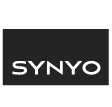 https://www.synyo.com/wp-content/uploads/SYNYO-NEWS-featured-image-NEW01007705EN.png
400
459
leo
https://www.synyo.com/wp-content/uploads/2017/09/synyo-logo.png
leo2025-01-01 10:47:112025-02-10 10:48:51BOND: Outcomes in Advancing Education, Tolerance and Heritage Preservation to combat Antisemitism
https://www.synyo.com/wp-content/uploads/SYNYO-NEWS-featured-image-NEW01007705EN.png
400
459
leo
https://www.synyo.com/wp-content/uploads/2017/09/synyo-logo.png
leo2025-01-01 10:47:112025-02-10 10:48:51BOND: Outcomes in Advancing Education, Tolerance and Heritage Preservation to combat Antisemitism
PlatformUptake.eu: Supporting the Evolution of Open Service Platforms in the Active and Healthy Ageing Domain
The project delivered an inventory of the state of the art seeking to assess the use of open service platforms in the active and healthy ageing (AHA) domain. It achieved this goal by creating an ecosystem map, which is essential for the choice of platforms to be analysed and to identify aspects of relevance for the development of the monitoring methodology. Thus, PlatformUptake.eu depicted the whole ecosystem with its achievements and potential, targeting all user groups while also generating synergies among them with the ultimate goal of improving the quality of life of older people.
Glossary
To enable a detailed mapping of the AHA ecosystem, PlatformUptake.eu defined a glossary as it allowed the consortium to establish a clear definition of the technical, contextual and business terms to be used by the project for internal as well external communication. The glossary helped the consortium to establish an understanding on the common aspects of the open service platforms which were subjects to thorough analysis and assessment.
Ecosystem mapping
The process of ecosystem mapping allowed the project to establish a complete vision of all the analysed platforms and their relationships. The mapping was carried out along four main dimensions:
- Geographical dimension
- Relation dimension
- Application dimension
- Temporal dimension
The geographical dimension showed that in the last sixteen years almost all European countries have been involved in AAL / AHA projects, including North Macedonia, Switzerland and Norway as associated countries. Spain proved to be the most active nation regarding participation in the AAL / AHA projects which were examined by PlatformUptake.eu, followed by Germany, Italy, Greece, Netherlands and the United Kingdom.
The platform’s relational dimension showed that the analysed platforms can be divided into two main groups: one consisting of standalone platforms and a second one in which all platforms are related to each other (ACTIVAGE, FIWARE, ReAAL, UniversAAL, MPOWER, AMIGO, SOPRANO, OASIS, PERSON). The latter indicates that the receiving platform was partially created using a previous platform as a basis, typically inheriting some characteristics. These features can refer to its design or actual implementation.
The application dimension demonstrated that only two of the platforms which were analysed, FIWARE and interIoT, are not specific for the AAL / AHA domains. FIWARE for examples is applied in verticals such as smart energy, smart agri-food and smart health.
The temporal dimension has made it possible for the consortium to identify three main time bands that represent the evolution in AAL / AHA research: from 2004 to 2010, from 2010 to 2015 and from 2015 to 2020. In particular, it has been noted that, starting from 2010, the trend has been to exploit past knowledge and use it for the creation of a single platform. It was also concluded that till now there is still no standard that has been established in the area of platform development.
Based on the beforementioned criteria 48 platforms were identified and selected. The platforms and their related projects were chosen based upon their gained experience and knowhow in the field. Later on, this initial list was narrowed down to a group of eighteen solutions. The criteria which have led the consortium to exclude some of the platforms from the process of evaluation included among others their low impact on the development of AHA technologies or completion of project activities more than 10 years ago. Some of the platforms were even considered obsolete. Another exclusion criterion with relevance for the subsequent analysis phase was not to consider all those platforms which were designed to support the development of a specific technology, either by type of pathology (e.g. Dem@Care, HDIM, etc.) or by end user (e.g. FATE, I-DON’T-FALL, I-SUPPORT, etc.).
Eight main platforms
Next, departing from the outcomes of the assessment of the 18 platforms and their relevance for the achievement of the project goal a final selection of 8 was made. The list was established based upon, but not limited to, criteria such as the development-timeline of the different platforms. Solutions which were developed before 2010 were discarded from the analysis. However, projects that were predecessors of UniversAAL IoT and Activage AIOTES were considered, when and where relevant, for the technical analysis, as this evolutionary pathway could be one of the factors to influence its current existence and therefore be considered for the success factors to be concluded. Additionally, platforms which were not uncovered in the previous phase of the research were included in the list.
These 8 platforms were subject to a comprehensive analysis of their business, technical and contextual aspects which constituted the basis for the creation of the methodology for monitoring and evaluating the uptake and other success indicators of existing platforms in the field.
Dimensions of analysis
By analysing and discussing different methodologies (MAST, OPEA, GLocal Evaluation Framework and Market Intelligence), the main features that were relevant for the platforms’ analysis were extracted and a framework with the relevant areas and indicators was agreed on, combining three dimensions: business, contextual and technical.

Media 1: Critical Success Framework for open AHA platforms
Each of these dimensions encompasses a dedicated approach and several enclosed aspects. Besides a detailed description of each platform in these areas, some comparative figures are also drawn to summarise and illustrate the main similarities and differences between them.
Links
https://project.platformuptake.eu/
https://www.platformuptake.eu/
Keywords
Active and Healthy Ageing (AHA) domain, open service platforms, success factors, uptake, Glossary, Ecosystem mapping, Dimensions of analysis




